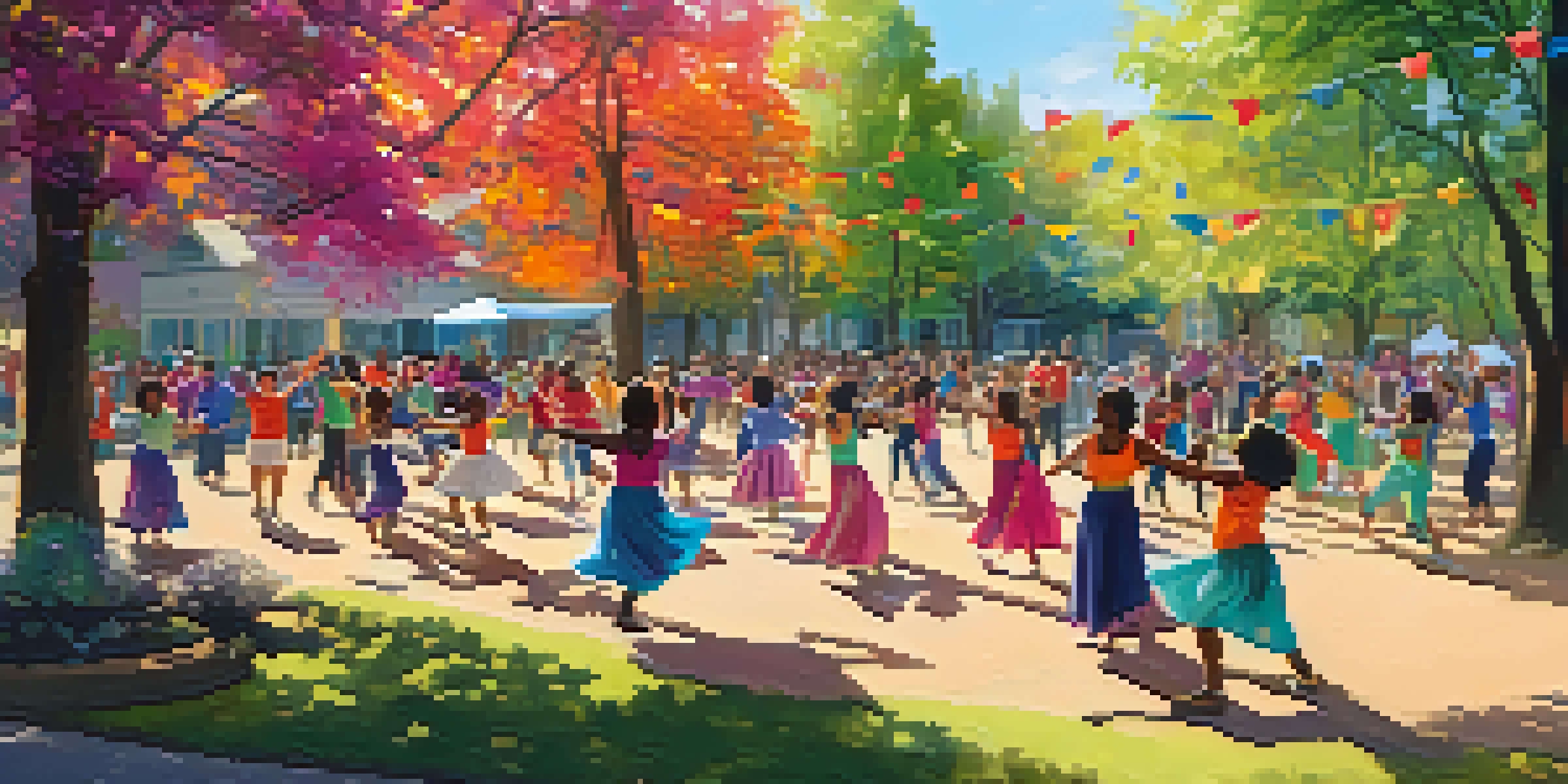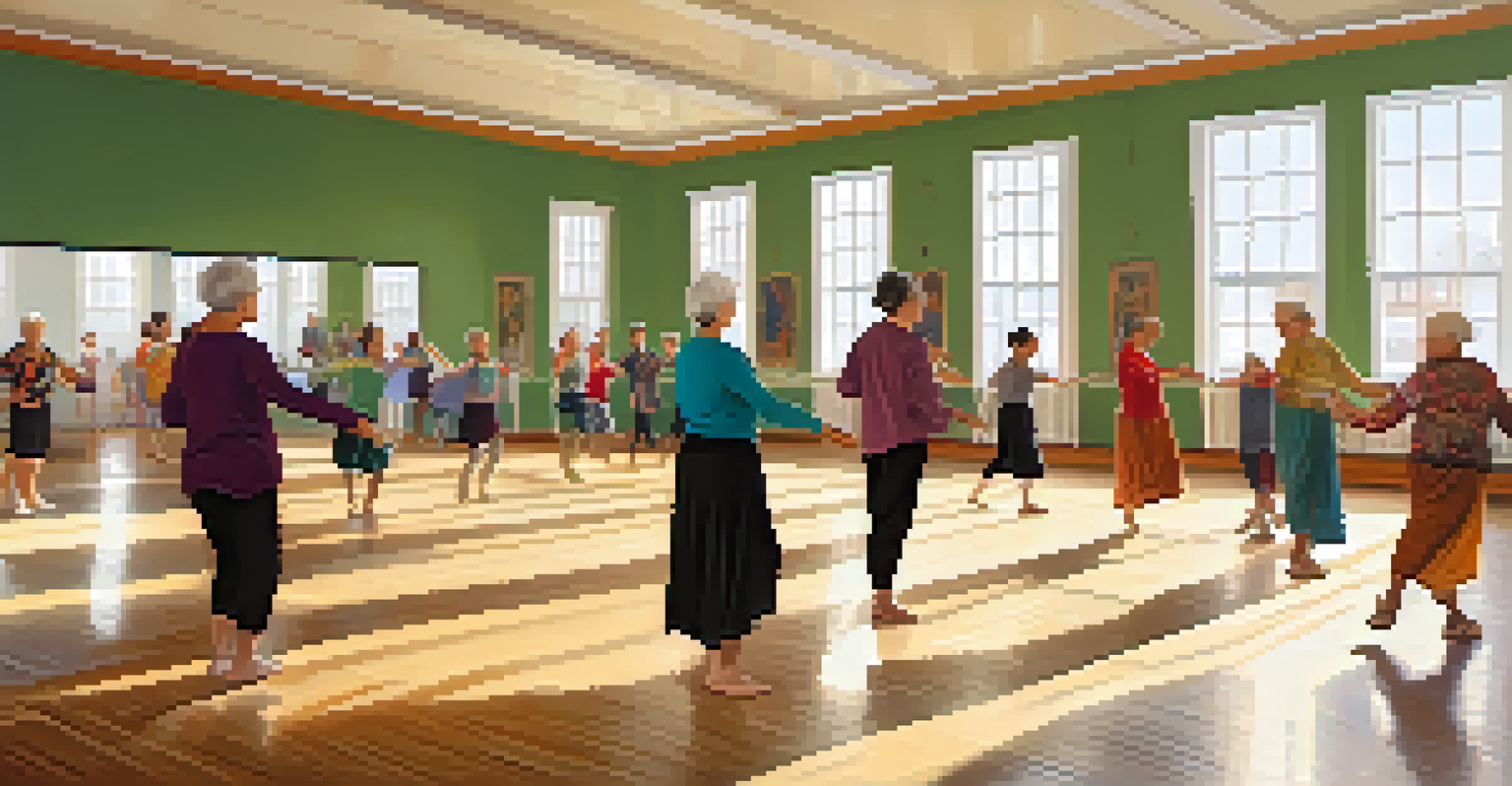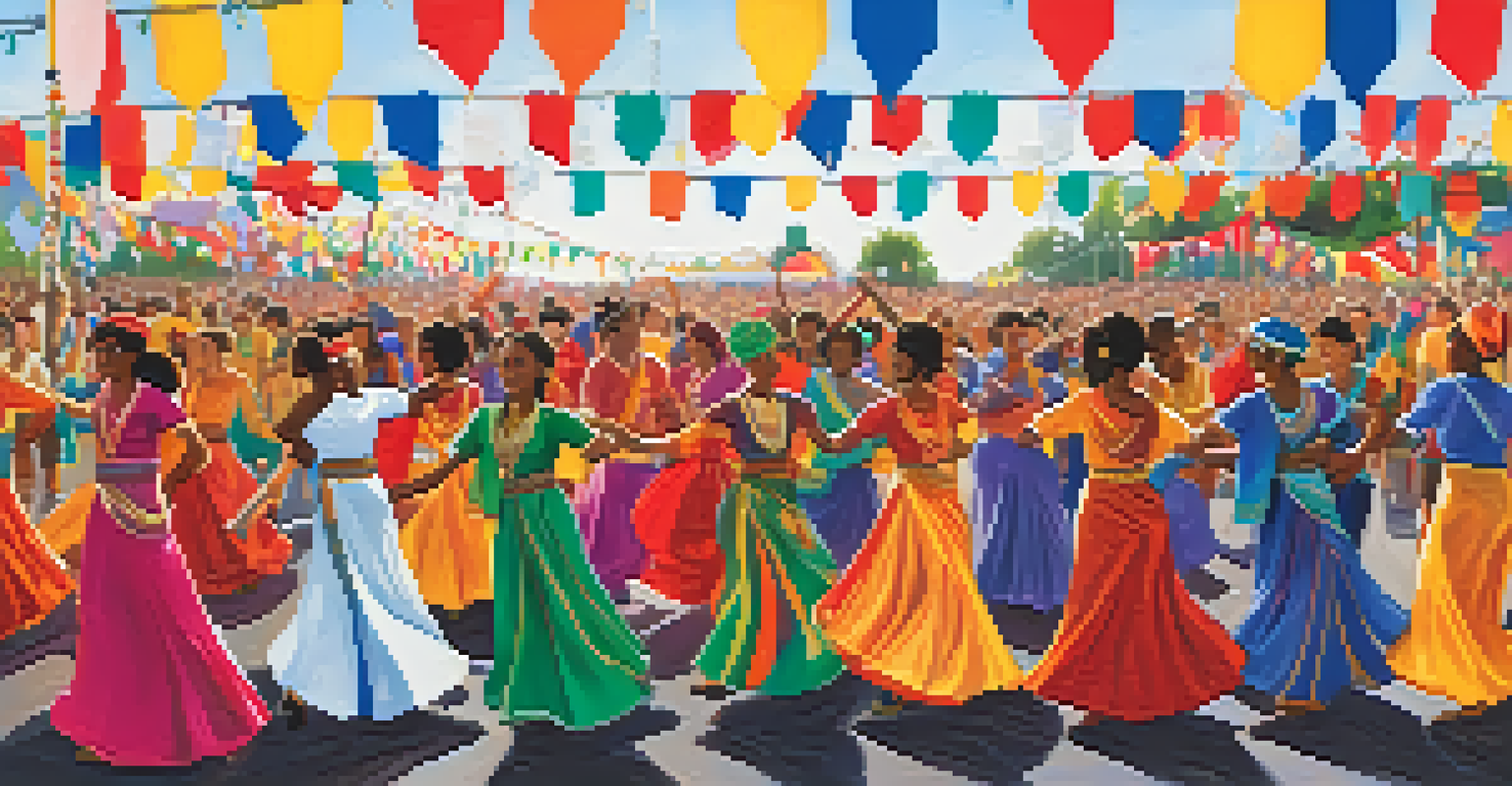The Intersection of Dance and Cultural Identity in Outreach Efforts

Understanding Cultural Identity Through Dance
Dance serves as a powerful medium for expressing cultural identity. It allows individuals to showcase their heritage in a dynamic and engaging way. From traditional folk dances to modern interpretations, each movement tells a story unique to that culture.
Dance is the hidden language of the soul.
For many communities, dance acts as a bridge between generations, preserving history while fostering a sense of belonging. In outreach efforts, dance can create connections that transcend language barriers, making it an effective tool for community engagement.
By participating in dance, individuals not only celebrate their culture but also educate others about its significance. This exchange of knowledge is essential for promoting diversity and understanding in our increasingly globalized world.
The Role of Dance in Community Outreach Programs
Outreach programs often leverage dance to engage community members and foster participation. These programs provide a platform for individuals to express themselves while promoting inclusivity. Dance workshops can attract diverse groups, encouraging collaboration among people from various backgrounds.

By incorporating dance into outreach, organizers create a lively and inviting atmosphere. This approach not only makes the experience enjoyable but also helps break down social barriers, allowing participants to connect on a deeper level.
Dance Connects Cultural Identities
Through dance, individuals express and celebrate their cultural heritage, fostering understanding and belonging within communities.
Moreover, dance can serve as a vehicle for social change, addressing issues such as identity, resilience, and unity. It empowers individuals to voice their experiences, contributing to community dialogues that promote understanding and respect.
Case Studies: Successful Dance Outreach Initiatives
Many organizations have successfully integrated dance into their outreach efforts, leading to positive community impacts. For example, a local nonprofit might host multicultural dance festivals that celebrate diversity through performances and workshops. These events draw crowds and foster a sense of pride among participants.
The dance is a poem of which each movement is a word.
Another example is community-centered dance programs that target youth, providing them with a creative outlet. By engaging young people in dance, these initiatives not only teach valuable skills but also instill confidence and a sense of identity.
These case studies highlight the potential of dance to unite communities while honoring cultural differences. They demonstrate that when people come together to dance, they are also coming together to share their stories and traditions.
Bridging Generational Gaps Through Dance
Dance can act as a bridge between generations, facilitating communication and understanding. Older generations often share traditional dances with younger members, creating opportunities for mentorship and learning. This exchange not only preserves cultural heritage but also strengthens family and community bonds.
In outreach programs, intergenerational dance classes encourage collaboration and respect. Participants learn from one another, fostering mutual appreciation for different styles and histories. This collaboration is vital for ensuring that cultural traditions are passed down and adapted over time.
Dance as a Tool for Social Change
Incorporating dance into outreach programs allows for the exploration of social issues and encourages dialogue around identity and resilience.
By engaging different age groups, dance helps create a sense of continuity within communities. It reminds us that while traditions may evolve, the essence of cultural identity remains strong, connecting generations through shared movement.
Dance as a Reflection of Social Issues
Dance often reflects the social issues faced by communities, making it a powerful tool for advocacy. Through movement, dancers can express their experiences with topics such as migration, identity, and social justice. This expressive form can resonate deeply with audiences, sparking conversations around these important issues.
In outreach efforts, incorporating themes of social justice in dance performances can raise awareness and inspire action. Dancers can share personal narratives, using their bodies to communicate struggles and triumphs. This emotional connection can motivate community members to engage in advocacy work.
By addressing social issues through dance, outreach programs can create a platform for dialogue and healing. It encourages participants to reflect on their own experiences and empowers them to take an active role in fostering change.
Creating Inclusive Spaces Through Dance
Inclusivity is a vital aspect of dance outreach efforts, ensuring that everyone feels welcome to participate. By designing programs that cater to diverse abilities and backgrounds, organizations can create a sense of belonging for all. This approach helps break down barriers and fosters a supportive community atmosphere.
Dance can be adapted in various ways to accommodate participants' needs, whether through modified movements or accessible venues. When everyone can engage, it enhances the overall experience and enriches the community fabric.
Inclusivity Enhances Dance Outreach
Creating inclusive dance programs ensures participation from diverse backgrounds, enriching the community and celebrating each individual's story.
Ultimately, inclusive dance programs promote understanding and respect among participants. They celebrate the unique contributions of each individual, reinforcing the idea that every story and every dance is valuable.
The Future of Dance in Cultural Outreach Efforts
As we look to the future, the role of dance in cultural outreach efforts will continue to evolve. With advancements in technology and social media, the potential for sharing dance and cultural stories on a global scale is immense. This connectivity can lead to new collaborations and innovative outreach strategies.
Moreover, as communities become more diverse, there is an opportunity for dance to serve as a unifying force. Outreach programs can embrace this diversity, integrating various dance styles and traditions to create a rich tapestry of cultural expression.

In conclusion, the intersection of dance and cultural identity in outreach efforts is vibrant and full of potential. By harnessing the power of dance, we can foster understanding, build community, and celebrate the beautiful diversity that enriches our lives.